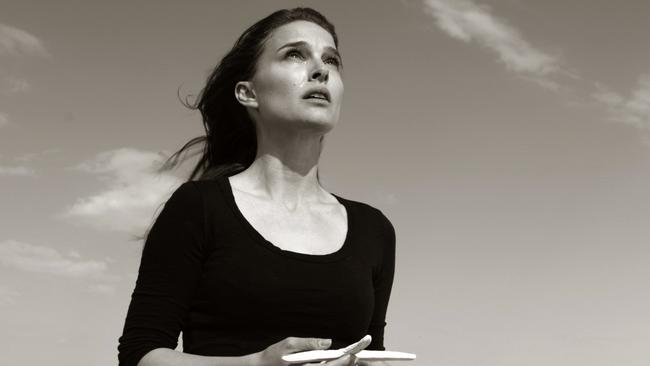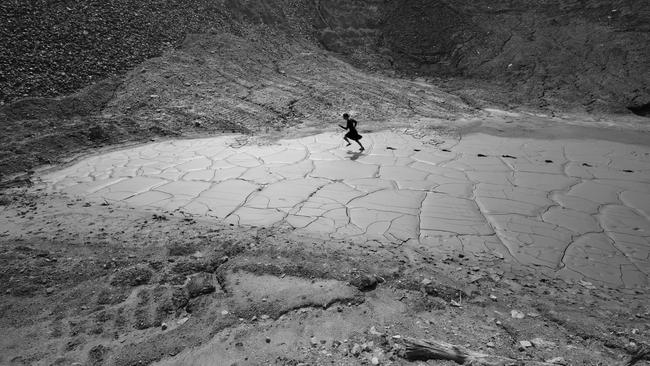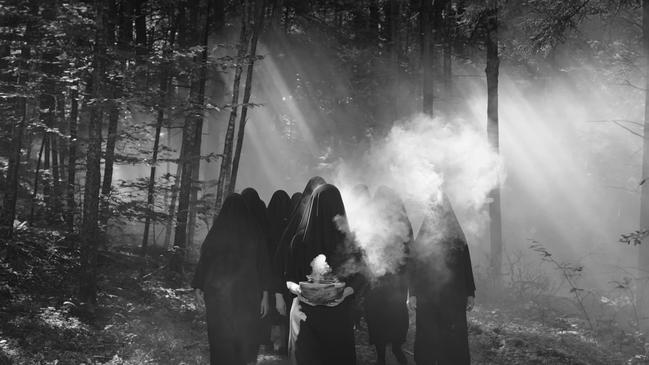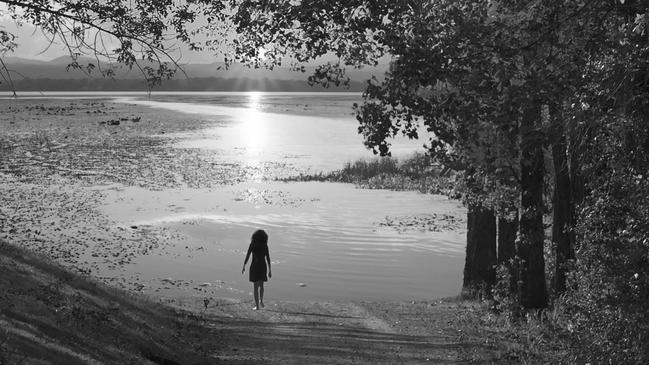Persians persist in surreal logic
Iran has once again been in the news in the most dramatic way and yet remains a nation very poorly understood in the West.

Iran has once again been in the news in the most dramatic way and yet remains a nation very poorly understood in the West. Most people are not even aware of who the Iranian people are, what language they speak, what their religious beliefs are, or what has happened in their history. And the most common mistake in the West is to confuse them with the Arabs, who have been for centuries their enemies.
The name Iran itself is recent: it was only adopted between the wars by the first Pahlavi Shah; before that the nation had been known as Persia for more than 2500 years. In fact, the Persians are one of a group of Iranian peoples, who included the Medes in antiquity and the Kurds — possibly descendants of the Medes — and others today. The Iranian peoples are not Arabic or Semitic, but Indo-European like almost all the peoples of Europe and the ancient Aryans who conquered India and brought the Sanskrit language, ancestor of many modern Indian languages. The Iranian languages are part of a group called Indo-Iranian, the eastern branch of Indo-European, which in the West included Greek and Latin as well as the Celtic, Germanic and Slavonic languages.
The Persian Empire was founded in sixth century BC by Cyrus the Great, who unified the Medes and the Persians; there is an admiring biography by the Greek soldier and writer Xenophon, a pupil of Socrates, the Cyropaedia. Most of us encounter the Persians during their two unsuccessful attempts to conquer the small but stubbornly independent Greek city-states in 490 and 480BC; then at the end of the following century, Alexander conquered the Persian empire and briefly ruled territories that extended from Egypt to Afghanistan.
During and after these centuries, Greeks and Persians learnt much from each other; the Hellenistic world came under Roman rule, and the Romans always had the Persian Empire (ruled for some centuries by the Parthians, another Iranian people) on their eastern border. The fall of Rome in the West meant little to the Persians, for what we call the Byzantine Empire was in their eyes the continuation of Rome in the East, although most of the representatives of that empire they encountered were either Greek or Hellenised Syrians and other Levantines.

The Arabs were desert tribesmen and traders of little historical significance until they were galvanised by the new religion of Islam and went on a rampage of conquest in the seventh century AD. Notably, they conquered Persia and much but not all of the Byzantine territories, absorbing the lessons of these great civilisations in the process. The Persians eventually submitted to Islam and with the transfer of the caliphate from the Hellenistic city of Damascus near the Mediterranean to the inland Persian city of Baghdad, they began to Persianise the culture of the whole Arabic world. The golden age of Islam in the new capital was imbued with Persian culture — even the Thousand and One Nights were Persian stories although they survive in Arabic. Many of the greatest Islamic authors in the sciences, such as Avicenna, were also Persian but wrote in Arabic, the official language of the empire.
But the Persians, unlike other conquered peoples, held onto their own tongue, and a few centuries after the conquest, its renaissance began with Ferdowsi’s composition of the national epic, the Shahname, written in Persian with as few Arabic loan words as possible. Other great poets further enriched the language, and when the Ottomans in turn conquered the Arabs, Persian, as a far more sophisticated language than Turkish, became a new lingua franca for courtly, administrative and literary purposes, from Constantinople to Moghul India.
Many Persians still dislike the Arabs, especially as most Persians are Shia and most Arabs are Sunni; and the tendency to feel their land was violated by Arab invasion in the seventh century is compounded by the Sunni murder of the Shia leader and grandson of the Prophet, Hussein, at the Battle of Karbala (680AD), which is commemorated annually. After the Islamic Revolution of 1979, which overthrew the second Shah, Saddam Hussein took advantage of the disarray and crippled leadership of the Iranian armed forces to launch an invasion of Iran. The remarkable courage and even passion with which the Iranians fought back arose from their perception of this attack as renewing both the original invasion and the martyrdom of Karbala.

The enmity lives on today in the confrontation between Iran and Saudi Arabia, and the Iranian support for Shia rebels in Yemen. What is unfortunate is that Iran and Israel have become arch enemies; they were allies in the Shah’s time. And it is equally unfortunate that there is such a rift between America and Iran; this hostility originated in the occupation of the American embassy by a group of militants during the Islamic Revolution. In spite of these tense relations with America, there are many Iranians in the US. Many of the children even of senior Shia clergy study in America or Britain (President Rouhani himself obtained his PhD in Glasgow). But there are also Iranians who live there, as here in Australia and elsewhere, in exile because of their religious or political views.
Among Iranian artists who live abroad several are women: Parastou Forouhar, in Berlin since her parents were murdered by secret service agents in 1998, and Shirin Neshat, who lives in America and who came to prominence in 1994 with the Women of Allah series, in which women were photographed carrying weapons and bullets, their bodies inscribed with calligraphic writing and wearing the veil that has been compulsory since the 1979 revolution but is now a focus of resistance among a new generation. In these three short films, Shirin Neshat deals with issues that are at once more personal and more universal, and less specifically focused on Iran and its recent history. They are conceived as simulations of dreams, and as so often in dreams the most prominent motifs relate to the sense of self in the world, of family, loss, rejection and guilt. But by virtue of the fluid and surreal logic of dreams, all of these themes end up taking on a profoundly Persian and Islamic colouring.
The earliest of the films was made in 2013 with Natalie Portman in the lead role. She finds herself on a beach, looking out at the ocean — a common motif in dreams, and yet a subtly alien one in the Persian context, since Iran is a vast and largely landlocked country, yet with two coasts: in the north on the Caspian Sea and in the south on the Persian Gulf. The young woman — each of the protagonists is a young woman, an alter ego of the artist herself — sees the dim figure of a man walking on the beach and follows him into a grand but seemingly derelict house. There is some echo of Belle arriving at the enchanted castle of the Beast in Cocteau’s La Belle et la bête (1946). She loses sight of the man, but wanders the house until she comes to a room in which a dozen or so elderly people are seated in a row. When she looks at them they are dim, like the memories of departed family members.
Then she comes to another room and finds a young woman lying in the lap of an old crone, her face hidden. When she attempts to rouse her, the second young woman suddenly lifts her head in a silent scream: it is herself. In the coda that follows, we see her walking away across the beach, and then cut to her again, looking out the window of the house at the departing figure.

The other two films were made in 2016, each with a different but equally impressive Persian actress in the role of protagonist; their names also serve as titles for the works. In Roja, a young woman is sitting in an audience mostly composed of old people. On a small stage an elderly man, naked to the waist, kneels and begins to sing The Carnival is Over, which was a Russian song long before its adaptation into English; the original refers to the story of a Cossack rebel chieftain who kills his lover, a Persian princess.
When the man finishes his song, he singles out the young woman and subjects her to a vicious verbal attack, challenging her to come up on stage an reveal to everyone what a lying, treacherous and manipulative woman she really is. Disturbed, the girl gets up and leaves, walking out into the desert, where she sees an old woman she takes to be her mother. The old woman trudges towards her, but as they get close her features begin to dissolve and she turns into a monster or witch who shoves the young woman violently as though in rejection.
The final work, Sarah, is also the first we encounter on entering the exhibition, for each film is shown on a separate screen in its own space. As always, the dream sequence begins with the protagonist inexplicably finding herself in an alien environment, this time a deep forest. She is alarmed by an approaching group of soldiers marching along a path through the forest and hides behind a tree to watch them go past.
This film most explicitly makes reference to the contemporary political situation in the artist’s country, for as they get closer, we can see these soldiers are meant to be Iranian, and probably part of the paramilitary Revolutionary Guard that wields so much power and tends to be responsible for acts of provocation towards the West; its most redoubtable commander was the late General Soleimani. It was probably behind the rocket attack in September on the Saudi refineries, and it also controls the Basij militia, which has been used to crack down on demonstrators.
Next to appear on the road is a group of women veiled in black — also unmistakably Iranian and post-revolutionary, but this time the leader carries what looks like a smoking brazier, which recalls the pre-Islamic Zoroastrian religion that still deeply marks Persian culture, including its new year ceremony.
After this the girl walks slowly down to a lake, where she sees herself, uncannily, floating in the water like Ophelia and then sinking, eyes open, beneath its surface. It is a powerful oneiric image, but also seems to pick up the Zoroastrian symbolism, for pools of water like this are regularly found, as at the Sassanian ruins of Firuzabad, in front of fire temples. Neshat’s dreams thus combine personal anxieties with social and political themes and ultimately with atavistic memories of ancient Persia long before the mullahs.
Shirin Neshat: Dreamers
National Gallery of Victoria, Melbourne, to April 19




To join the conversation, please log in. Don't have an account? Register
Join the conversation, you are commenting as Logout